If you’re considering getting a tattoo that’s both beautiful and meaningful, an ornamental tattoo might be perfect for you. Ornamental tattoos are intricate designs that incorporate various shapes and patterns, often inspired by traditional art styles from around the world. In this comprehensive guide, we’ll explore the meaning of ornamental tattoos, their origins, and some popular designs to inspire your next tattoo.

The Origins of Ornamental Tattoos: From Classic to Contemporary
The history of ornamental tattoos dates back thousands of years, with evidence of their existence found in many ancient cultures around the world. For example, Polynesian tribes have been known to use tattooing as a form of self-expression for over 2,000 years. Similarly, the Maori people of New Zealand have a rich tradition of tattooing, with each design carrying a unique meaning.
In other parts of the world, ornamental tattoos were used as a way to mark one’s status or achievements. In Japan, for instance, criminal offenders were once marked with tattoos as a form of punishment. Later, tattoos became popular among members of the Yakuza, a notorious Japanese criminal organization.
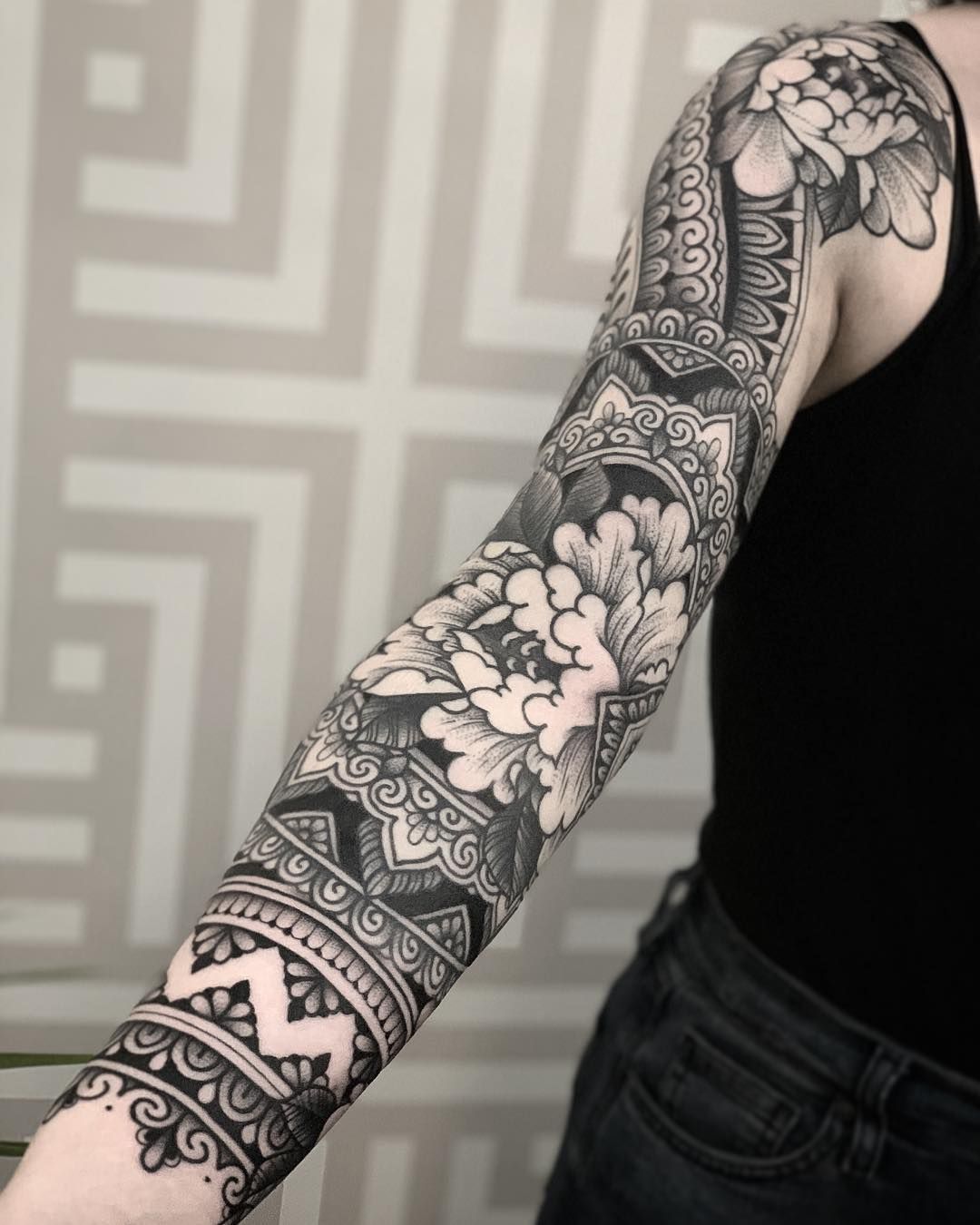
Ornamental Tattoo Meaning: What is the Significance?
Ornamental tattoos are a style of tattoo art that focuses on intricate and decorative designs, often inspired by patterns, shapes, and motifs found in various cultures, art movements, and architectural elements. These tattoos are primarily aesthetic in nature and are often chosen for their visual appeal rather than a specific symbolic meaning. However, there are several potential interpretations and aspects associated with ornamental tattoos:
Aesthetic Appreciation
Tattoos have been a part of human culture for centuries and are often used as a means of self-expression, with each design holding its own unique significance. However, one reason many people choose ornamental tattoos is simply for their aesthetic appeal. These tattoos can be considered as wearable art that allows the wearer to showcase their appreciation for intricate and captivating designs.
Ornamental tattoos typically feature detailed patterns, shapes, and various artistic elements such as flora and fauna. They are often created using fine lines, shading, and color to add depth and dimension to the design. The result is a visually striking tattoo that catches the eye and creates a sense of admiration for the craftsmanship and skill of the artist.
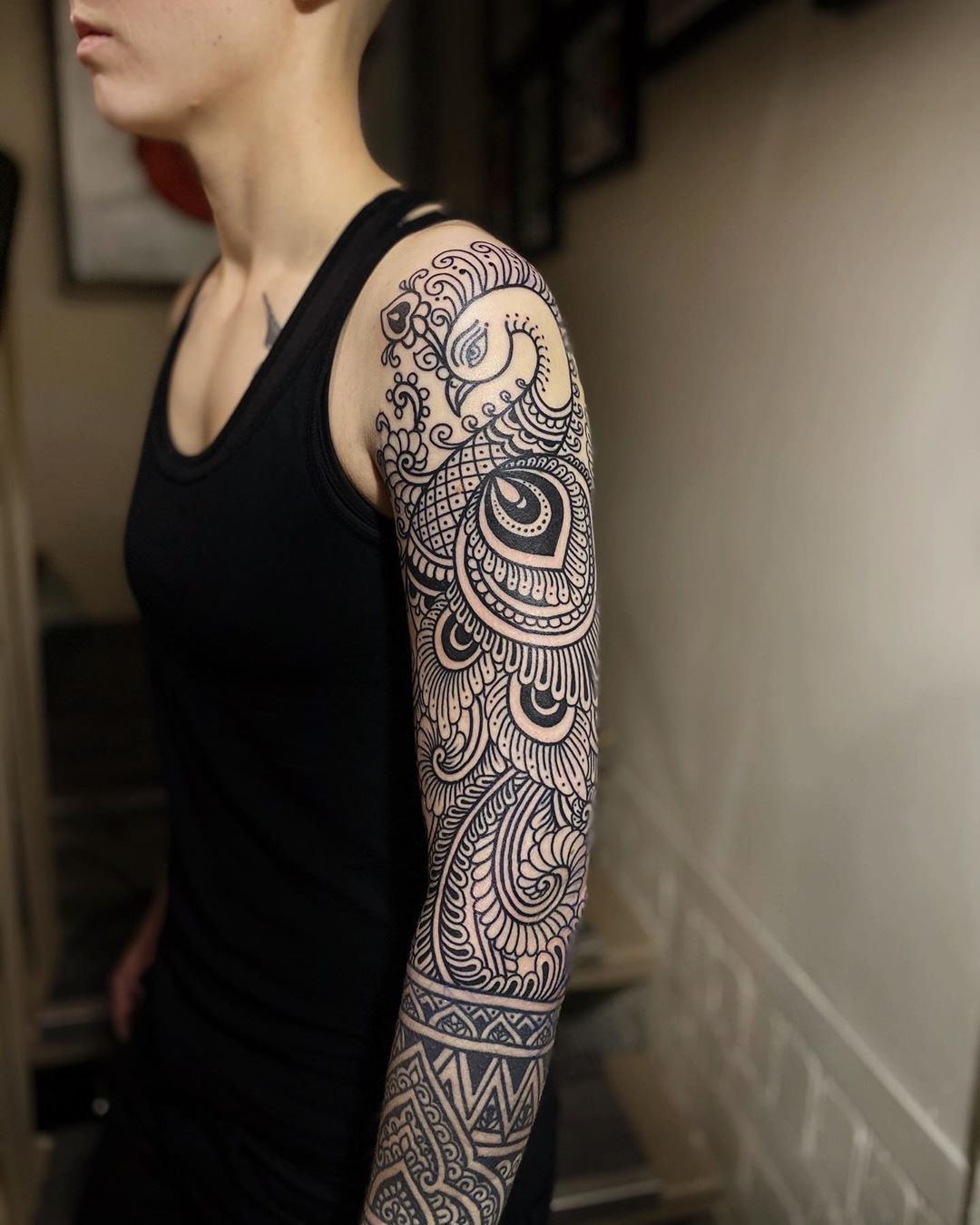
Many people choose ornamental tattoos because they want to enhance their physical appearance with something that is visually appealing. They may choose a design that complements their body shape or highlights a particular feature, such as a wrist or ankle tattoo that draws attention to the wearer’s delicate features. In some cases, ornamental tattoos may also serve as a form of self-care, with individuals seeking to adorn their bodies with beautiful designs as a way to boost their self-confidence and feel good about themselves.
Additionally, ornamental tattoos can be seen as a symbol of creativity and individualism. Each design is unique and personalized to the wearer’s taste, allowing them to express their personality and style in a way that feels authentic to them. Some people may even see their tattoo as a reflection of their inner selves, with the intricate patterns and symbols representing their thoughts, feelings, and experiences.
Cultural Influences
Ornamental tattoos are a popular form of body art that can feature intricate patterns and symbols from various cultures and traditions. These designs can hold deep significance for the person getting the tattoo, as they may reflect cultural heritage, personal connections, or simply an appreciation for a particular artistic style.
Many ornamental tattoos incorporate patterns and symbols that have been used in specific cultures for centuries. For example, Polynesian tattoos often feature geometric shapes and patterns that represent different aspects of nature, such as waves and sharks. These tattoos may also incorporate traditional Polynesian symbols, such as the turtle or the sun, which hold spiritual meaning in Polynesian culture.
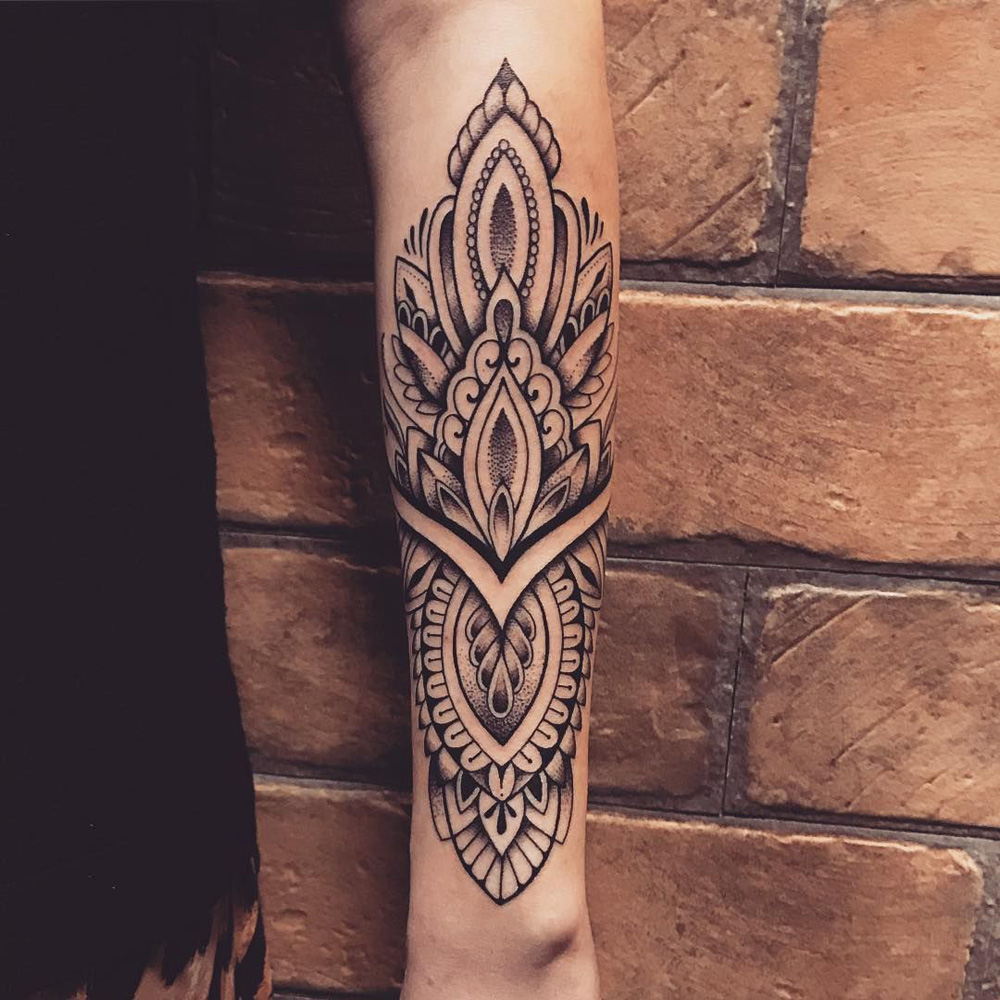
Similarly, ornamental tattoos may incorporate patterns and symbols from other cultures, such as Hinduism, Buddhism, or Celtic traditions. These designs may depict deities or important figures from these cultures, or may incorporate symbols that hold spiritual or religious significance. For example, a tattoo of the Om symbol, which is important in Hinduism and Buddhism, may represent a person’s spiritual beliefs.
In addition to cultural significance, ornamental tattoos may also hold personal meaning for the person getting the tattoo. For example, a person may get a tattoo of their family crest or coat of arms, which represents their family heritage. Similarly, a person may get a tattoo of a loved one’s name or initials as a tribute to that person.
Finally, some people may choose to get an ornamental tattoo simply because they appreciate the artistic style of the design. For example, a person may be drawn to the intricate patterns and flowing lines of a henna-inspired tattoo, or may appreciate the bold, graphic designs of a tribal tattoo.
Spirituality and Mysticism
Sacred geometry, mandalas, and other spiritual symbols have long been used as decorative elements in various forms of art, including tattoos. These designs are highly intricate and meaningful, often reflecting a deep interest in mysticism, spirituality, and the interconnectedness of all things.
Sacred geometry is a term used to describe the geometric shapes and patterns that are believed to hold divine meaning and symbolism. These shapes include the flower of life, the tree of life, the Fibonacci spiral, and the golden ratio. Many people believe that these shapes are present in nature and that they represent fundamental principles of the universe. By incorporating these shapes into tattoo designs, individuals can express their connections to these principles and convey their beliefs about the nature of reality.
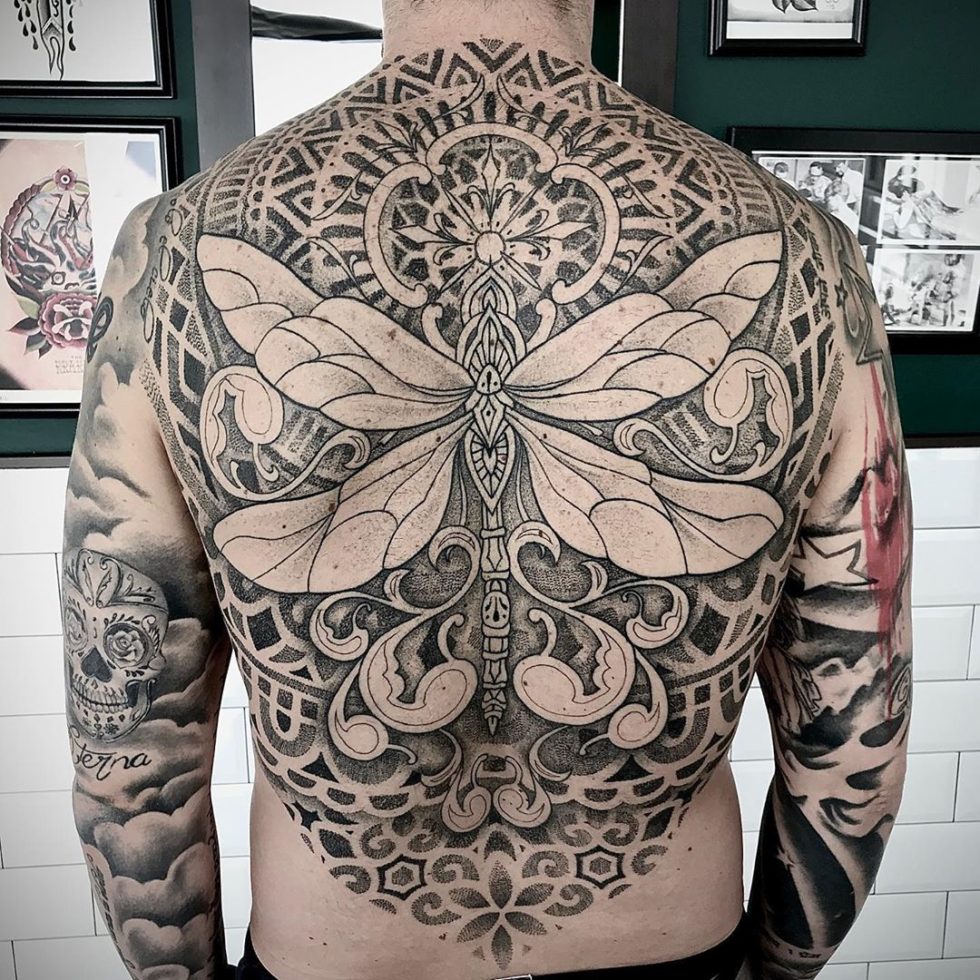
Mandalas are another popular design element used in tattoos. They are circular designs that typically feature symmetrical patterns and intricate details. Mandalas originated in Hinduism and Buddhism, where they were used as representations of the universe and the self. In these traditions, mandalas were believed to be powerful tools for meditation and self-discovery. Today, many people use mandalas in their tattoos as a way to connect with these ancient spiritual traditions and to express their own personal journey of self-discovery.
Other spiritual symbols commonly used in tattoo designs include runes, chakras, and astrology signs. Runes are an ancient alphabet system used by the Vikings, while chakras are energy centers located in the body that are associated with different aspects of our physical, emotional, and spiritual health. Astrology signs, on the other hand, are based on the zodiac and are believed to influence our personalities and life paths.
Personal Identity
Ornamental tattoos have become increasingly popular in recent years as a way for individuals to express their unique identity and personal style. Unlike traditional tattoos that may have cultural or symbolic significance, ornamental tattoos are purely decorative in nature and are often chosen based on the wearer’s personal tastes and preferences.
One of the primary benefits of ornamental tattoos is that they can be customized to reflect the individuality of the wearer. With a seemingly infinite number of patterns and designs to choose from, individuals can select a tattoo that speaks to their personal style, interests, and experiences. This allows them to create a one-of-a-kind piece of artwork that is uniquely theirs.
In addition to reflecting individual style, ornamental tattoos can also serve as a form of self-expression. For many people, getting a tattoo can be a way to communicate something meaningful about themselves to the world. This might include expressing their creativity, showcasing their personality, or even making a statement about their values or beliefs.
The choice of specific patterns and designs can also provide insight into the wearer’s background and culture. Some individuals may choose patterns that reflect their ethnic heritage, while others may select designs that represent a significant event or milestone in their life. Whatever the reason, each tattoo design serves as a visual representation of the wearer’s story and unique perspective.
Body Adornment
Tattoos have been a form of body adornment for centuries, with evidence of tattooing practices dating back to ancient civilizations. In modern times, tattoos have become increasingly popular and mainstream, with more and more people choosing to decorate their bodies with these permanent designs.
Like traditional jewelry and body piercings, ornamental tattoos can be seen as a way to enhance the body’s aesthetics and create a sense of personal embellishment. Just as a piece of jewelry can add sparkle and shine to an outfit, a tattoo can add color and texture to the skin, creating a unique and personalized look.
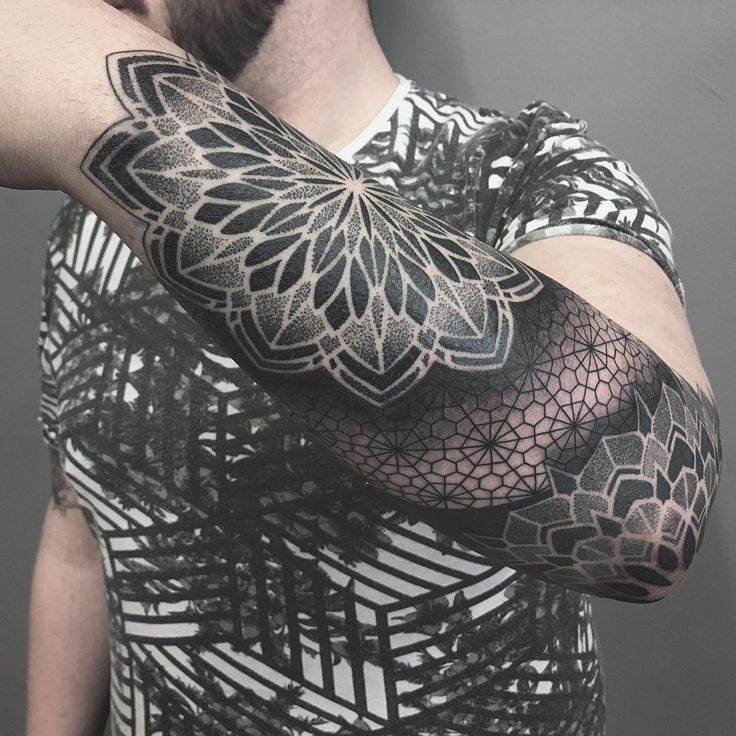
In addition to their aesthetic value, tattoos can also hold significant personal meaning for those who choose to get them. A tattoo can represent a memory, a belief, a value, or even a loved one. It can serve as a constant reminder of something important or meaningful in one’s life, making it a deeply personal and emotional form of body adornment.
While some may view tattoos as unprofessional or inappropriate, attitudes towards body art have become more accepting in recent years, with many workplaces now allowing visible tattoos. Additionally, the rise of social media has made it easier for people to share and showcase their tattoos, leading to greater appreciation and visibility for this form of body adornment.
Permanence and Commitment
Tattoos have evolved from being symbols of rebellion to forms of self-expression and personal identity. Ornamental tattoos, in particular, are viewed by some people as a way to commit to a certain aesthetic or style. These types of tattoos are typically designed to accentuate the body’s natural curves and lines, and they often feature intricate patterns and designs.
The permanence of a tattoo is one of the main reasons why ornamental tattoos are viewed as a form of commitment. Once a design is inked on the skin, it becomes a permanent part of the individual’s appearance. This means that the person has made a conscious decision to integrate the tattoo into their identity and lifestyle. For many people, this commitment represents a significant level of dedication to their chosen design and a willingness to embrace it as an integral part of who they are.
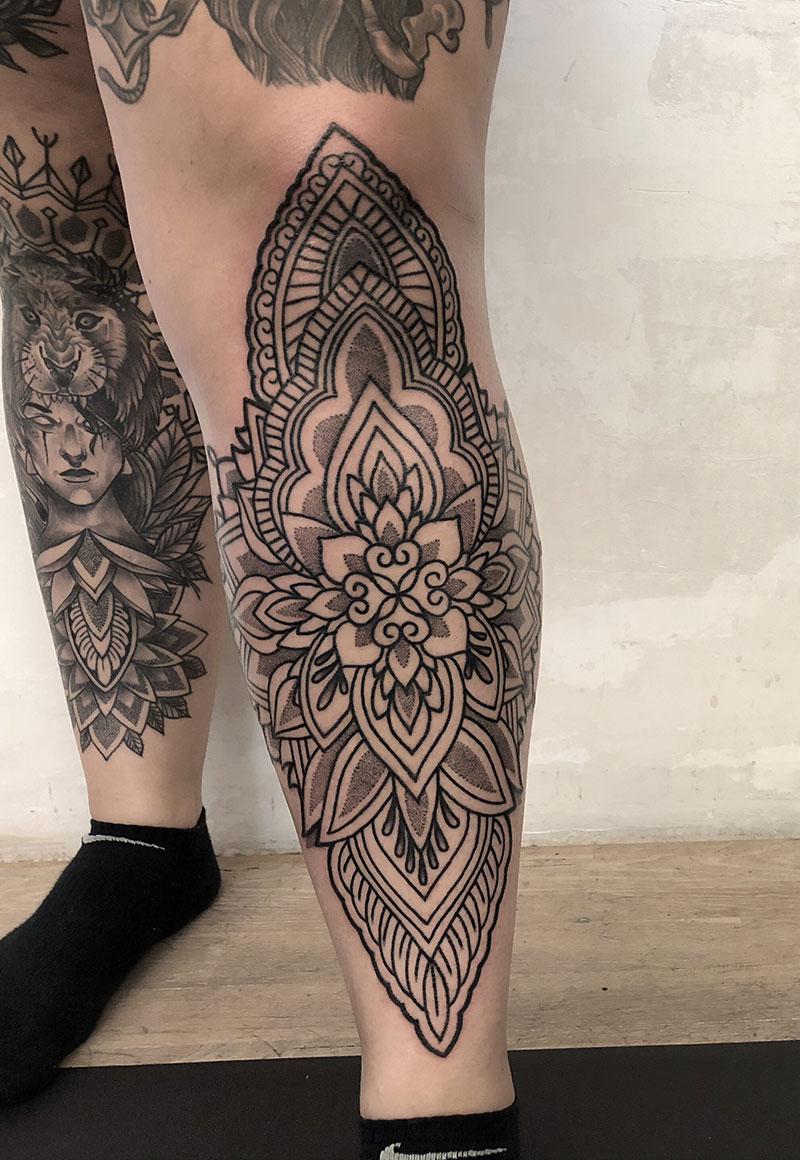
Moreover, ornamental tattoos are often seen as a way to express a person’s creativity and individuality. By choosing a specific design, the individual is able to showcase their personality and unique sense of style. They are also able to demonstrate their appreciation for art and design, as well as their desire to make a statement through their appearance. The permanence of the tattoo further solidifies this commitment to expressing oneself through body art.
At the same time, ornamental tattoos can also serve as a way for individuals to connect with others who share similar interests and aesthetics. They can act as conversation starters and even help foster a sense of community among like-minded individuals. In this way, ornamental tattoos can provide a sense of belonging and connection, further reinforcing the commitment to one’s chosen design and aesthetic.
Emotional Expression
Ornamental tattoos are a popular form of body art that have been practiced for thousands of years across many cultures and traditions. While they may not carry universal meanings, unlike some traditional tattoos such as those found in Maori or Polynesian cultures, they can still hold significant personal emotional value for the wearer.
The beauty of ornamental tattoos lies in their intricate and often abstract designs. These tattoos often feature elaborate patterns, shapes, and symbols that can be customized to fit the individual’s preferences and style. The process of choosing an ornamental tattoo design can be deeply personal and reflective, requiring the wearer to consider their own identity, personality, and experiences.
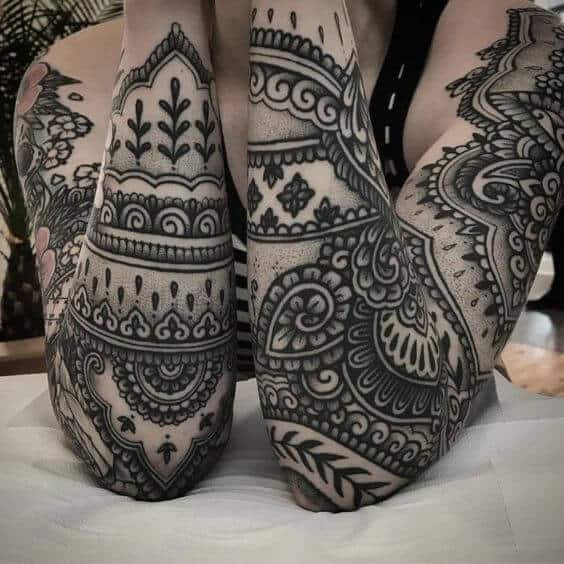
For many people, the design of an ornamental tattoo can evoke strong emotions or memories that are particularly meaningful to them. For example, a person might choose to get a tattoo featuring a particular flower because it reminds them of a loved one who has passed away. Similarly, someone might opt for a geometric pattern that represents balance and harmony because they are striving to find these qualities in their own life.
In addition to evoking specific emotions or memories, ornamental tattoos can also serve as a form of self-expression and body positivity. Many people see their tattoos as an extension of themselves, a way to celebrate their unique identity and communicate something important about who they are to the world. Getting an ornamental tattoo can be a powerful act of self-love and self-acceptance, empowering individuals to embrace their quirks and imperfections.
Artistic Expression
Ornamental tattoos are a popular form of body art that serve as a canvas for tattoo artists to showcase their skills and creativity. These types of tattoos typically feature intricate designs and patterns, often drawing inspiration from various cultures and traditions.
One of the unique aspects of ornamental tattoos is the collaborative nature between the wearer and the artist. While the artist may have a general concept or design in mind, they work closely with the client to ensure that the final product reflects their personal style and interests. This collaboration allows for a truly unique and personalized piece of art that carries artistic expression beyond traditional mediums like painting or sculpture.
Because ornamental tattoos often feature fine lines and intricate details, they require a high level of skill and precision from the artist. This means that many tattoo artists who specialize in ornamental tattoos have spent years perfecting their craft and honing their technique.
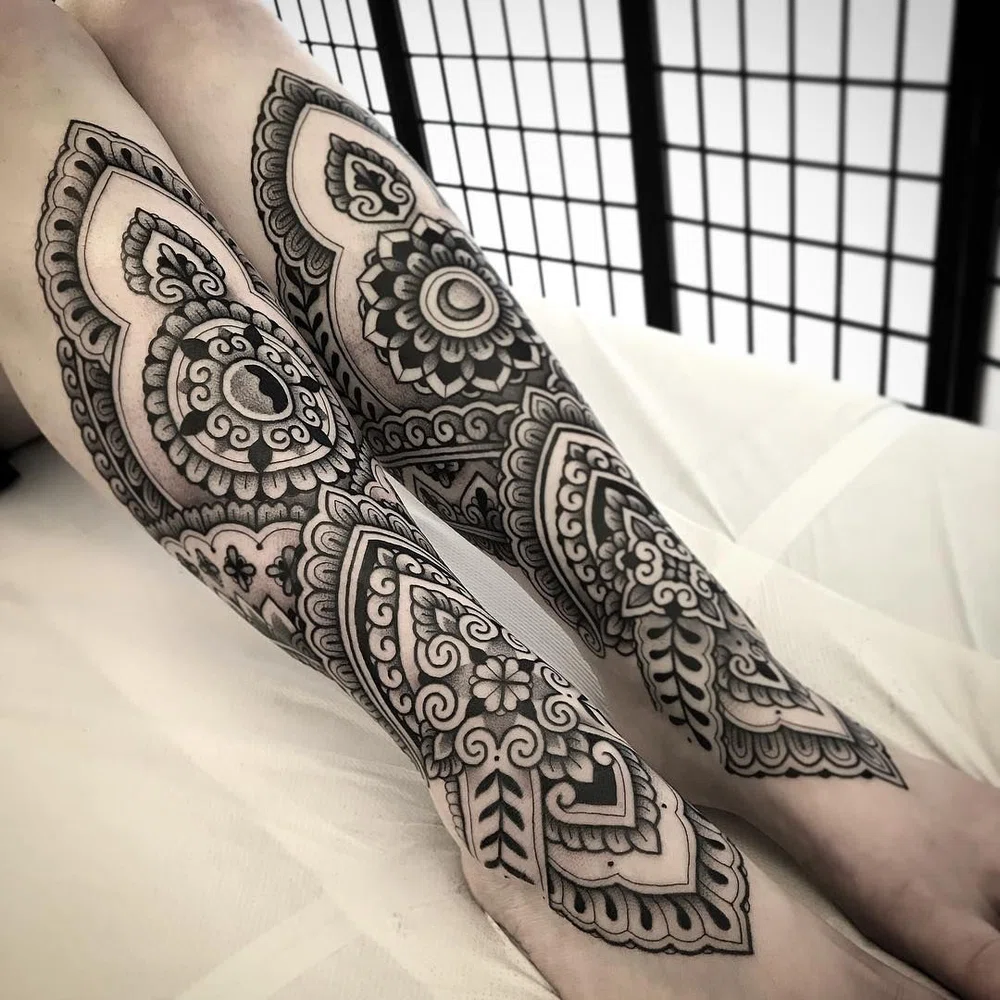
In addition to being visually stunning, ornamental tattoos often hold significant meaning for the wearer. They may represent a particular cultural tradition or spiritual practice, or simply serve as a symbol of self-expression and individuality. For some, getting an ornamental tattoo can be a transformative experience, helping them to connect more deeply with their own sense of identity and purpose.
It’s important to remember that while ornamental tattoos may not have universally recognized meanings like some traditional symbols, their significance can be deeply personal to the individual who chooses to get them. If you’re interested in getting an ornamental tattoo, take the time to discuss your ideas and preferences with a skilled tattoo artist. They can help you design a piece that resonates with your aesthetic sensibilities and personal values.
Popular Ornamental Tattoo Designs: Aesthetic Variations
Ornamental tattoos come in many different styles, each with their own unique characteristics and aesthetic appeal. Here are some of the most popular types of ornamental tattoos:
Mandala Tattoos
Mandala tattoos feature circular designs that are meant to represent the universe or cosmos. These intricate patterns often include geometric shapes, flowers, and other decorative elements.
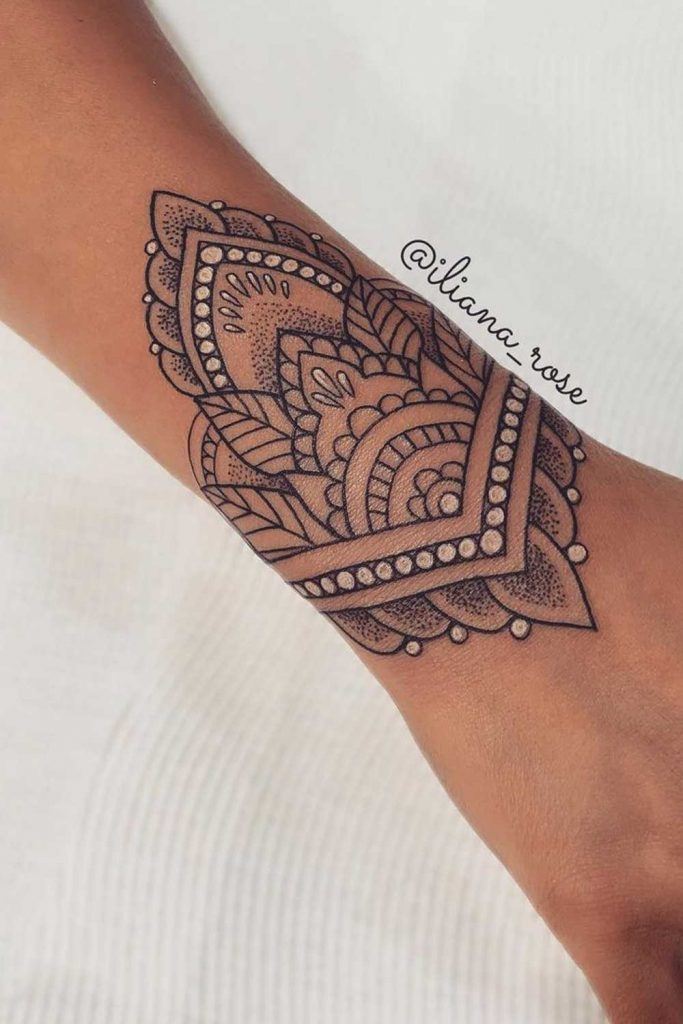
Henna Tattoos
Henna tattoos are temporary designs that are created using a natural dye made from the henna plant. These tattoos are popular in many cultures, including India, Pakistan, and the Middle East.
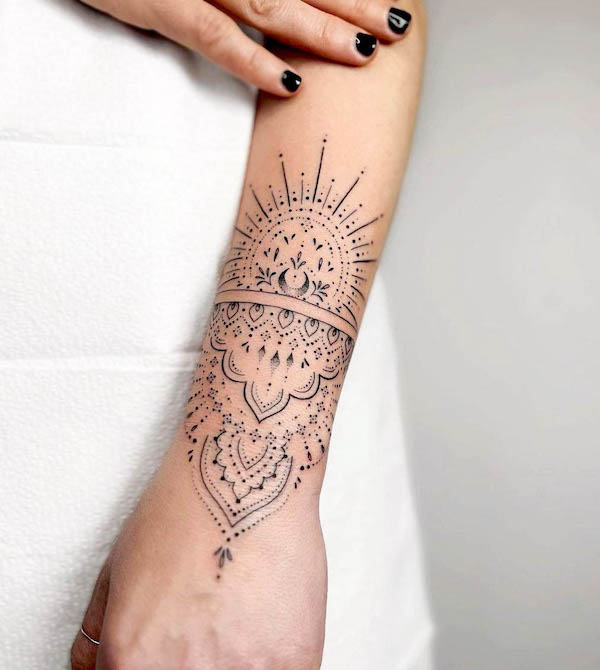
Tribal Tattoos
Tribal tattoos are inspired by traditional motifs from various indigenous cultures around the world. These designs often feature bold black lines and abstract shapes.
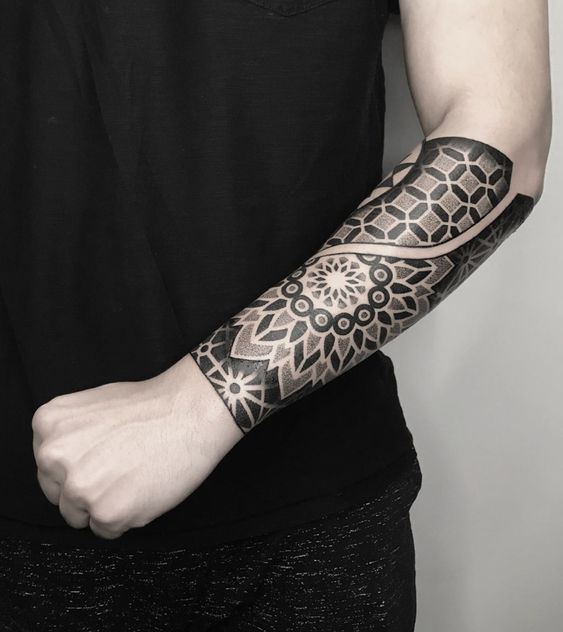
Celtic Tattoos
Celtic tattoos are inspired by the art and culture of the ancient Celts. These designs often feature intricate knotwork, animals, and other symbols with spiritual significance.
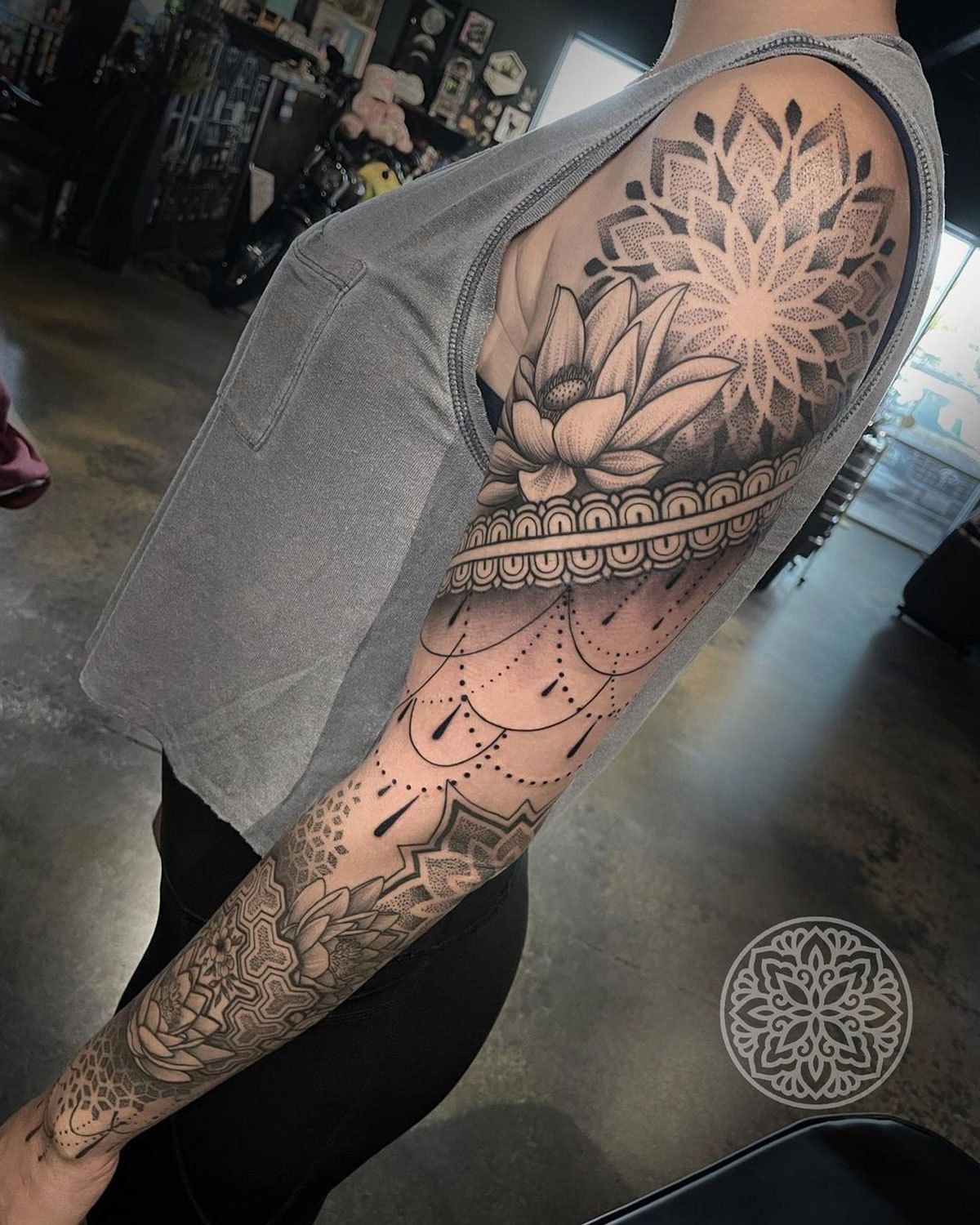
Geometric Tattoos
Geometric tattoos feature precise, angular shapes and patterns. These designs often incorporate symmetry and repetition to create visually striking images.
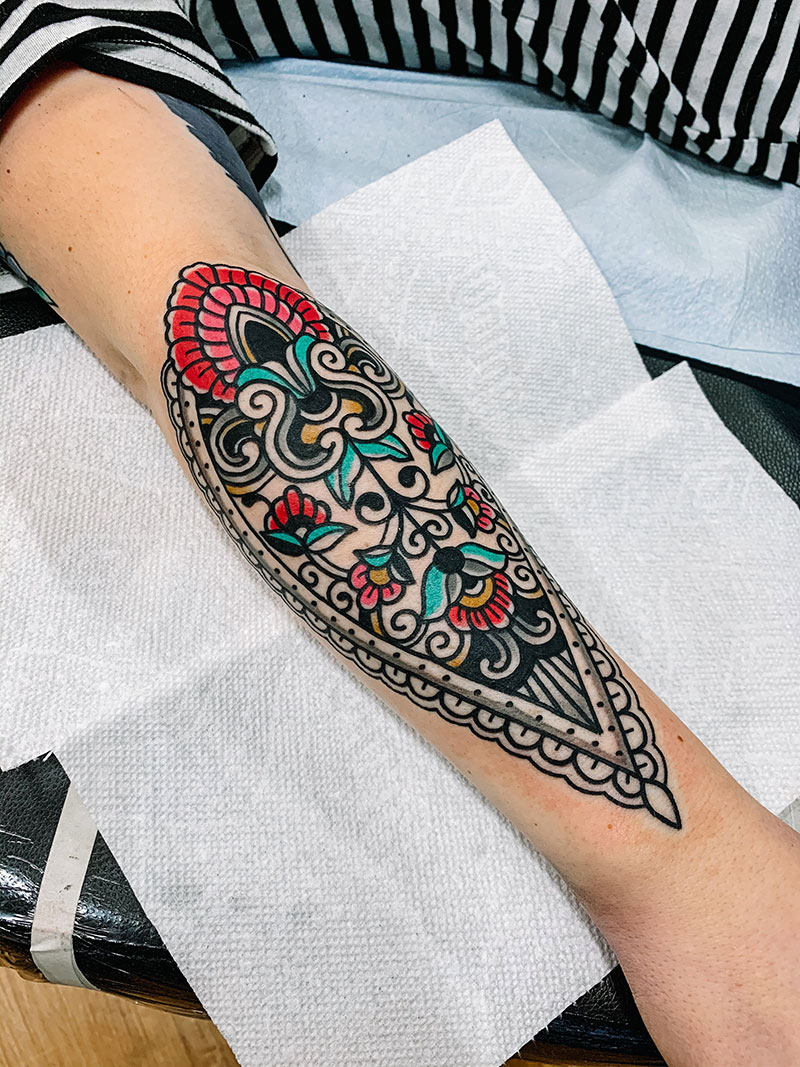
Conclusion: Embracing Nature’s Beauty
Ornamental tattoos have a rich history and offer a wide range of design options for those looking to express their creativity or appreciate traditional cultural motifs. Whether you opt for a mandala, henna, tribal, Celtic, or geometric design, an ornamental tattoo can serve as a beautiful and meaningful addition to your body art collection.

I am Harvey Berry, a tattoo enthusiast who has immersed himself in the diverse world of ink, passionately exploring the beauty and artistry within each tattoo. My mission extends beyond uncovering the aesthetics of tattooing; it involves sharing in-depth knowledge across all aspects of this art form.
Fueled by genuine curiosity and love for every facet of tattooing, I have diligently crafted well-researched articles, with a special focus on the Tattoo Meaning of Impeccable Nest section. Here, my aim is to help the tattoo community gain a deeper understanding of the meanings and values embedded in each tattoo.
One of my primary goals is to encourage responsible decision-making when it comes to getting inked. I recognize that choosing to get a tattoo is a significant personal decision that requires careful consideration. Hence, I provide diverse resources covering the meaning of tattoos, the tattooing process, aftercare tips, and other valuable information.
Whether you are a seasoned tattoo enthusiast or embarking on your first exploration of the world of body art, I aspire to be a reliable resource for you at every step of your journey. I hope that my extensive knowledge of tattoos, especially in the Tattoo Meaning section, will assist you in finding inspiration to express yourself through the art of tattoos.
